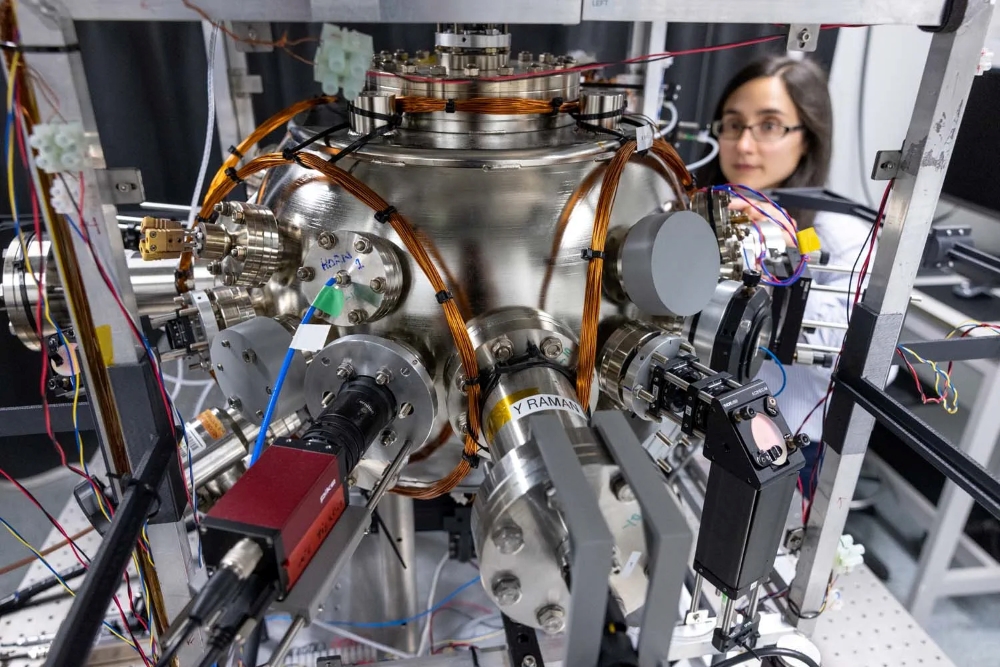
The UK Government has announced that the Defence Science and Technology Laboratory (DSTL) has concluded a historic first test campaign with a UK-built optical atomic clock outside of a laboratory environment. The campaign, known as ‘Demonstration of Advanced Timing Apparatus’ (DATA) is part of a series of experiments on the performance and limitations of quantum technology for timing and positioning applications.
Quantum technology has the potential to provide self-contained, unjammable and ultra-accurate positioning, navigation and timing (PNT) where Global Navigation Satellite Systems (GNSS) signals are unavailable, inaccessible, jammed or degraded.
DATA is being delivered with partners including high-tech companies Infleqtion (UK), Aquark Technologies, HCD Research and Imperial College London, and in cooperation with the Royal Navy’s Office of the Chief Technical Officer and the Army Futures Team at the BattleLab. This is the latest in a series of firsts delivered by DSTL and UK industry and academia in practical, PNT applications for Quantum technologies.
The Royal Navy in particular has been pursuing the development of these solutions for over a decade, working within the framework of the wider “UK National Quantum Technology Programme”.
In 2018, M Squared and the Imperial College London unveiled the world’s first stand-alone quantum atomic accelerometer, a device that measures how an object’s speed changes over time and, by combining that information with rotation measurements and the initial position of the object, calculates the current location with great accuracy. Accelerators are of course commonly used, but the uniqueness of the quantum accelerator is the use of ultra-cold atoms to make incredibly accurate measurements. As the atoms move through the sensor, an ‘optical ruler’ is formed by using a series of laser pulses. This allows the acceleration of the atoms to be precisely measured.
Prototype quantum accelerometers for navigation have been installed within a NavyPODS (Persisted Operationally Deployed System) container and have been embarked for testing first on the experimental ship XV PATRICK BLACKETT (in 2023) and then on the sealift vessel MV HURST POINT, in cooperation with Imperial College London and University of Birmingham, primarily to demonstrate how the cold atom manipulation and atom interferometry would cope with the stress of navigation, ship motion, vibrations etcetera.
In May 2024 a first, historic in-flight demonstration of Quantum Inertial Navigation saw Infleqtion UK install its Tiqker optical atomic clock and an ultra-cold atom quantum system on Qinetiq’s Airborne Technology Demonstrator, a modified Avro RJ100 aircraft-laboratory.
“Hardening” quantum technology for work outside of laboratory environment and miniaturization to enable their deployment on a greater range of platforms is the main objective for the next few years.
The Ministry Of Defence, via DSTL, has invested more than £28 million to pursue early adoption of these game-changing technologies for Defence needs. Unjammable, incredibibly accurate PNT, once sufficiently deployable, could dramatically improve the capability of missiles and ensure highly accurate navigation for aircraft, ships (including submarines, which can’t relay on GNSS signal when submerged) and land platforms.








.png)
